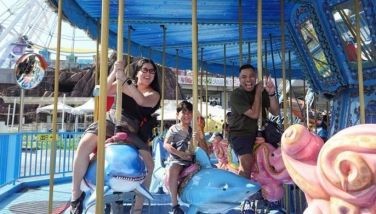Elbow pain: The 'ouch' from overuse
As with any joint, you generally don’t think about your elbow unless it hurts. Elbow pain may come about for any number of reasons. Sometimes, it’s related to a particular condition, such as arthritis. However, elbow pain many times can be traced back to overuse in such a way that causes inflammation. The good news is that with appropriate treatment and some time, you can usually get back to your regular activities.
How It Works
The elbow functions as a hinge joint. It’s also structured to allow you to rotate your forearm. Three long bones meet to form the elbow — the humerus in the upper arm and the ulna and radius in the forearm.
Powering the elbow’s movement are the biceps and triceps muscles in the upper arm. The biceps muscle on the front of your arm bends your forearm (flexion) and the triceps muscle on the back of your arm straightens your arm by extending your forearm (extension).
In the midst of all these muscles and bones are key tendons and ligaments that help hold the joint together. Tendons are fibrous cords that connect the muscle to the bone. Ligaments are fibrous tissues that connect bone to bone. Helping to reduce friction at the tip of the elbow joint is a fluid-filled sac called the olecranon bursa.
Painful Areas
 Elbow pain can vary, depending on which specific area of the joint is involved. These include the:
Elbow pain can vary, depending on which specific area of the joint is involved. These include the:
• Outer side of the elbow. You don’t have to be on a tennis court to develop the overuse injury called tennis elbow. The medical name is lateral epicondylitis, which means there’s inflammation in the tendons of the forearm muscles where they attach to the bony prominence on the outside of the elbow (lateral epicondyle).
Tennis elbow comes about due to repeated contraction and overuse of forearm muscles in order to straighten and raise the hand and wrist — such as what occurs when playing tennis or a number of other activities, including hammering, painting, operating a chain saw or pulling plants from your garden. Overuse causes inflammation or a series of tiny tears in tendons that attach forearm muscles to the bone — specifically, the lateral epicondyle (see illustration).
As such, you may experience elbow pain when lifting something, making a fist or gripping an object, shaking hands, or turning a doorknob. Pain may also occur if you extend your forearm or straighten your wrist, or if you touch or bump the outer side of your elbow.
• Inner side of the elbow. On the flip side of tennis elbow is another common elbow overuse injury sometimes referred to as golfer’s elbow or baseball elbow. The medical term “medial epicondylitis” describes the pain and inflammation associated with tendons that attach to the inner side of the elbow (see illustration).
Medial epicondylitis may crop up after any number of activities where there’s repeated forceful use of the wrists or clinching of the fingers — such as what occurs when playing golf or baseball, or with several other activities, including gardening and carpentry.
Pain may come on suddenly or gradually and extends along the inner side of the forearm. Your elbow may feel stiff, and you may experience weakness in your hands and wrists. Certain activities or motions may make pain worse, such as swinging a golf club or a racket, squeezing or pitching a ball, picking something up with your palm down, or bending your wrist toward the forearm. Shaking hands or turning doorknobs can also be troublesome.
• The elbow tip. The olecranon bursa cushions the elbow’s bony tip. Repetitively bumping the elbow during sports or other activities may aggravate this bursa, causing inflammation (bursitis). Even leaning repeatedly on the elbow could result in bursitis at the tip (see illustration).
You might experience a dull ache or stiffness in the elbow, pain that worsens with movement or pressure, an area that’s swollen or warm to the touch, and possibly skin redness at the tip of your elbow.
Managing The Problem
 Take a clue from your body — if something you’re doing is causing pain in your elbow, stop the activity. In certain instances, immediate medical care is important, specially if:
Take a clue from your body — if something you’re doing is causing pain in your elbow, stop the activity. In certain instances, immediate medical care is important, specially if:
• The elbow is hot, red or inflamed, and a fever is present.
• You can’t bend the elbow.
• The elbow looks misshapen or you suspect a broken bone.
• You experience severe pain, especially after an injury.
Otherwise, you might find help with simple self-care. Rest your elbow and avoid activities that tend to aggravate the joint. Applying ice periodically can help reduce inflammation as can taking nonprescription pain relievers as directed to help ease pain and inflammation. If elbow pain is ongoing (chronic), you may find that applying heat is helpful as well.
If self-care steps don’t help, see your doctor. Often, a medical history and physical examination are enough to determine what the problem is. In some cases, an X-ray may be used to rule out another possible cause such as a fracture or arthritis.
Generally, the sooner a helpful treatment plan is in place, the sooner usual activities can be resumed. And even though it may sometimes take several weeks or months to see improvement, conservative treatment for elbow pain is often successful.
In addition to self-care steps, wearing an elastic bandage, forearm strap or a wrist-forearm brace may help elbow pain due to lateral or medial epicondylitis. These can reduce the load of everyday movement on the elbow as well as the stress on already-injured tissues in the joint.
If a favorite sport or regular activity has aggravated your elbow, a physical therapist can help instruct you on the proper form and techniques to stretch and strengthen the muscle areas that support good elbow and wrist motion. Doing so helps to protect the joint’s function.
In general, keeping your wrist straight during lifting activities allows the bigger muscles of the upper arm to do more of the work than the smaller forearm muscles do. This reduces the force that would otherwise be transmitted to the elbow. It’s also helpful to ice the elbow for 15 to 20 minutes after heavy use.
If bursitis is the source of pain, resting and immobilizing the elbow give the olecranon bursa a break from continued friction. Icing the painful area and taking nonprescription pain relievers as directed can help pain and inflammation. You may find wearing a foam pad on the elbow’s tip offers protection as the swelling goes down. Your doctor may recommend physical therapy or exercises to strengthen muscles that support the elbow. In some instances, an injection of corticosteroid into the bursa may help and usually brings immediate pain relief.




















